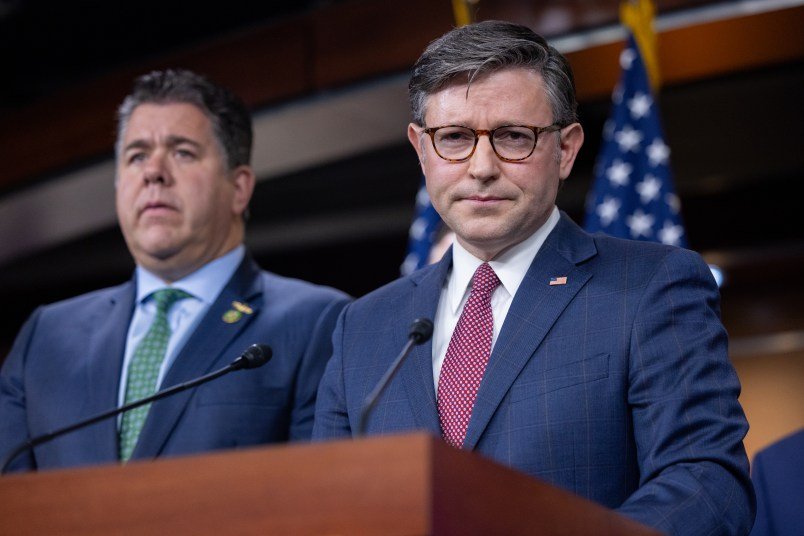Sky York Journal
Trump administration officials have been parrotting a $15 billion-per-week figure to estimate how much the now 20-day government shutdown is costing the U.S. economy.
Treasury Secretary Scott Bessent bungled the numbers during a CNBC interview last Wednesday, touting it as an eye-popping $15 billion a day and sending headlines into a frenzy before the Treasury Department put out a statement correcting its top official. Either way, the Trump administration and Hill Republicans are seeking to use the costliness of the shutdown as a messaging tool against their opponents.
But if money were really the issue, they’d be better off funding the vital health care program at the heart of the shutdown.
Democrats are refusing to vote for a budget bill that doesn’t include an extension of the Affordable Care Act’s enhanced premium tax credits, which are projected to cost $350 billion over 10 years, according to the Congressional Budget Office, and lead to 3.8 million more people becoming insured. Extending the credits for just one year would cost an estimated $30 billion, Daniel Hornung, a policy fellow at Stanford Institute of Economic Policy Research, told TPM.
“I think that there are important conversations to be had about how you can make the healthcare system more efficient,” said Hornung, former deputy director for the National Economic Council. “I do, though, think that right now, given where we are, what we need to do is extend these credits so people’s premiums don’t go up.”
An individual making $45,000 would see a more than $1,800 increase in healthcare costs, according to an analysis by the Bipartisan Policy Center, a D.C. think tank. A family of four with a household income of $90,000 would see a more than $3,700 increase in healthcare premiums, representing more than 4% of their entire annual income.
The cost of the shutdown is largely caused by decreased spending from the at least 700,000 furloughed federal workers missing paychecks. Those effects aren’t expected to be permanent, according to economists who’ve analyzed the shutdown. An S&P Global analysis said shutdowns “generally have only a marginal effect on the broader economy.” Every week federal workers go unpaid knocks down the GDP by about one-tenth of a percentage point, Alec Phillips, Goldman Sachs Research’s chief U.S. political economist, said on the company’s podcast, but those losses should be recouped when employees are back at work the following quarter. According to a CBO analysis of the 2019 partial shutdown under Trump I, the nation’s GDP was reduced by $3 billion, and private sector businesses were unable to recoup some of the money they lost as a result of stalled government spending.
“Most economists would tell you the economic impact of a shutdown is minimal if, when the government is reopened, people get back pay and the like,” Hornung told TPM.
The Trump administration has threatened to withhold back pay from furloughed workers, an unprecedented move that would certainly be met with legal action. The move would also put at serious risk any anticipated post-shutdown economic bounceback, which is largely contingent on federal workers getting and spending their money again. Trump has already upheld his promise to use the shutdown to fire more workers and close “Democrat programs,” though the Department of Health and Human Services immediately scrambled to rehire hundreds of workers it laid off and a federal judge halted Trump’s other firings for now after unions sued the administration.
In Will McBride’s view, the shutdown cost estimates coming out of the White House may be real, but Bessent is also probably using the figures to temper expectations about likely missed economic goals, especially regarding 3% annual GDP growth.
“I think he’s very much trying to, number one, identify a problem here that is real, that is going to make that goal more difficult, and one that, in Bessent’s telling, is caused by Democrats,” McBride, chief economist at the Tax Foundation, a conservative economic thinktank, told TPM. “So I think it gives him a way to explain away what I think is most likely to be a failure to achieve those very high, ambitious goals of his.”
McBride published a report advocating for decreased federal spending on healthcare and called the spending “unsustainable.” But, said McBride, “It’s certainly a bad and costly outcome to keep the government shut down.”
According to Hornung, notices have already started going out to people who rely on the tax credits informing them that their premiums will increase.Meanwhile, recent polling suggests Republicans are taking more blame for the shutdown than Democrats.
An AP/NORC poll taken between Oct. 9 and Oct. 13 found 58% of respondents blame Trump and Republicans for the shutdown compared to 54% who blame Democrats. An Economist/YouGov survey published on Oct. 14 found 39% of Americans believe the shutdown is the fault of the GOP compared to 33% who place blame on Democrats.
Voter ire ahead of midterm elections and a costly shutdown could be a high price to pay for Republican officials, especially if they end up being blamed for raising peoples’ health care costs.
“Republicans have shut down the government because they do not want Americans to have affordable health care,” Sen. Angela Alsobrooks (D-MD), who sits on the Senate Health, Education, Labor and Pension Committee, said in a statement to TPM. “This Republican shutdown is costing taxpayers billions of dollars.”
